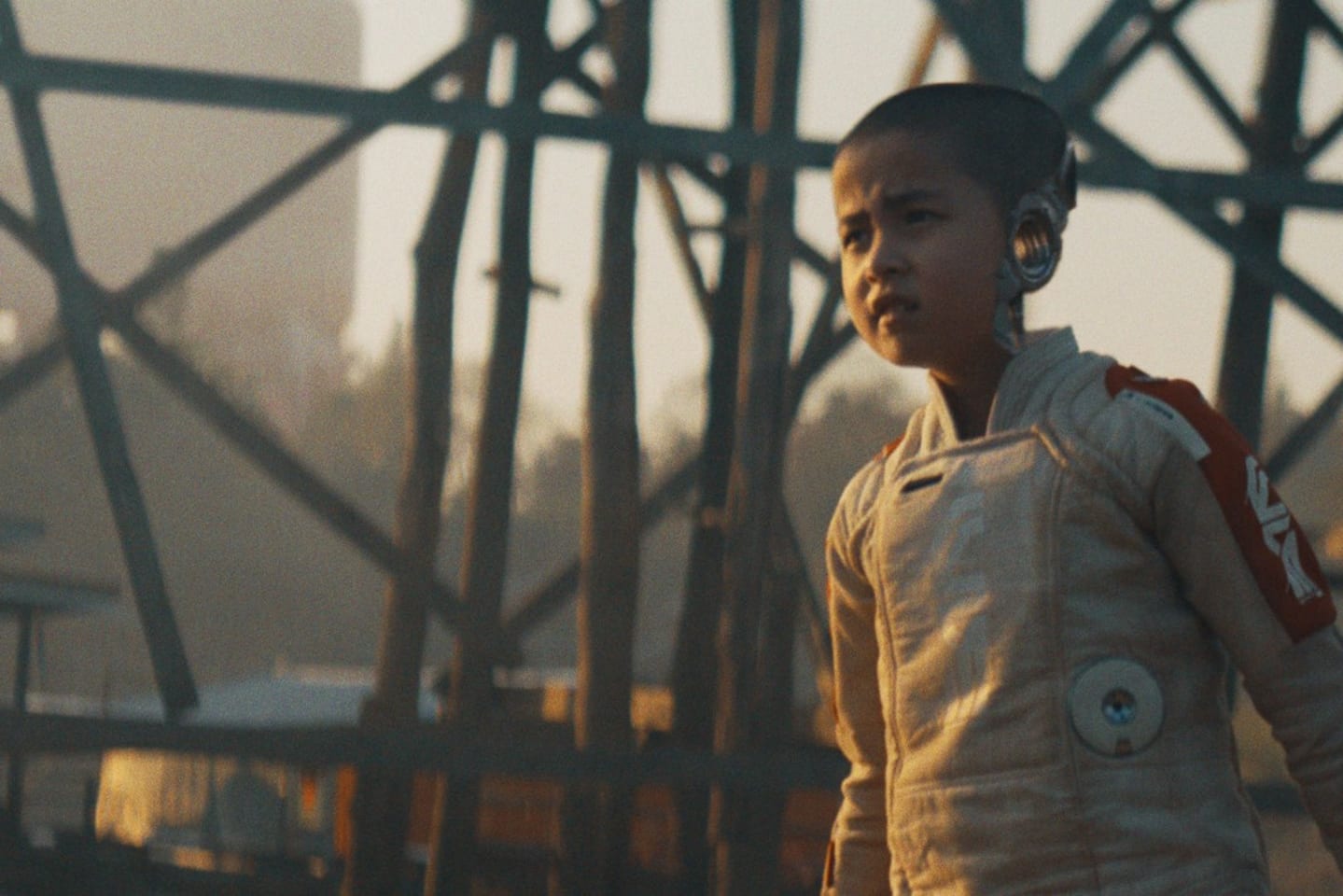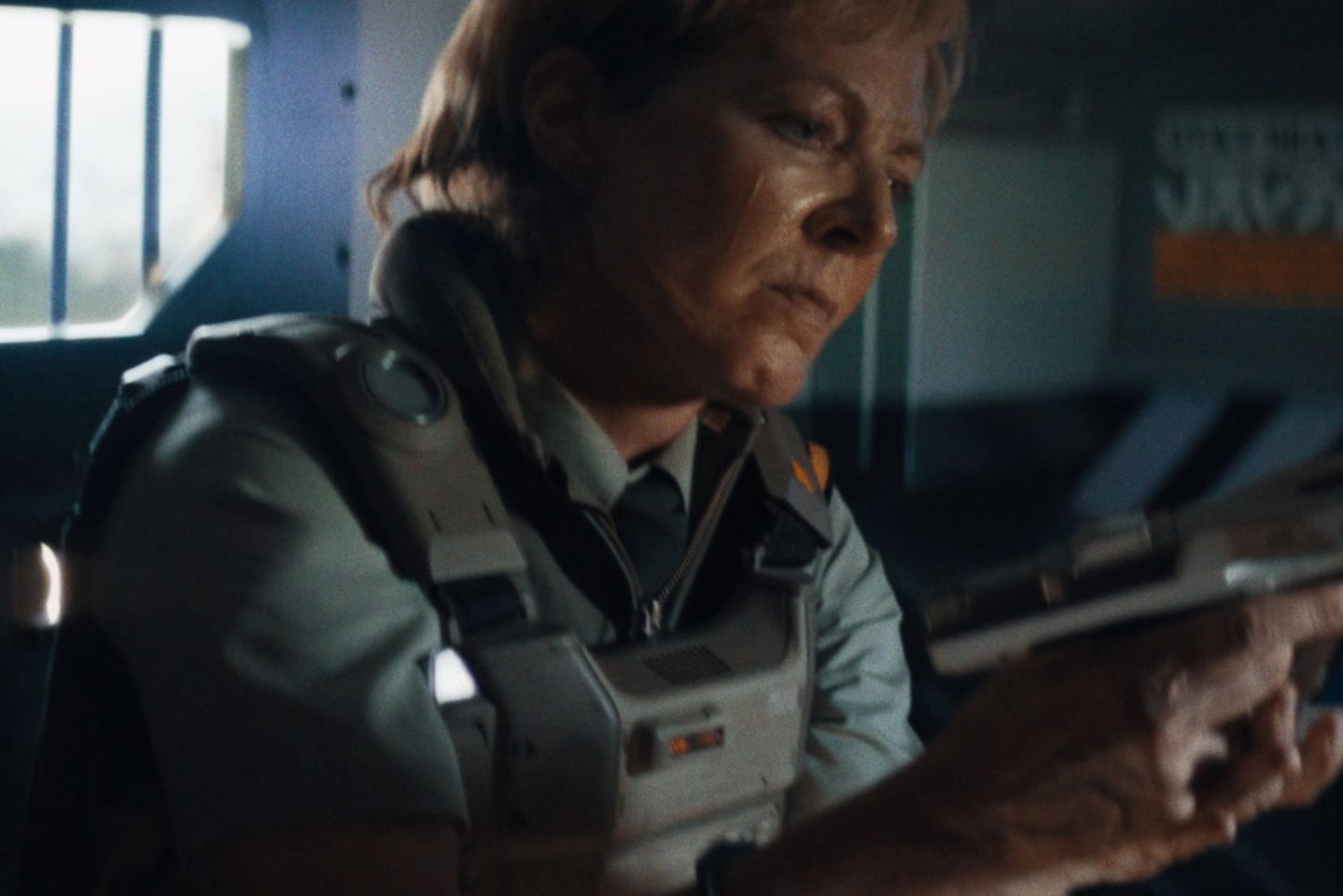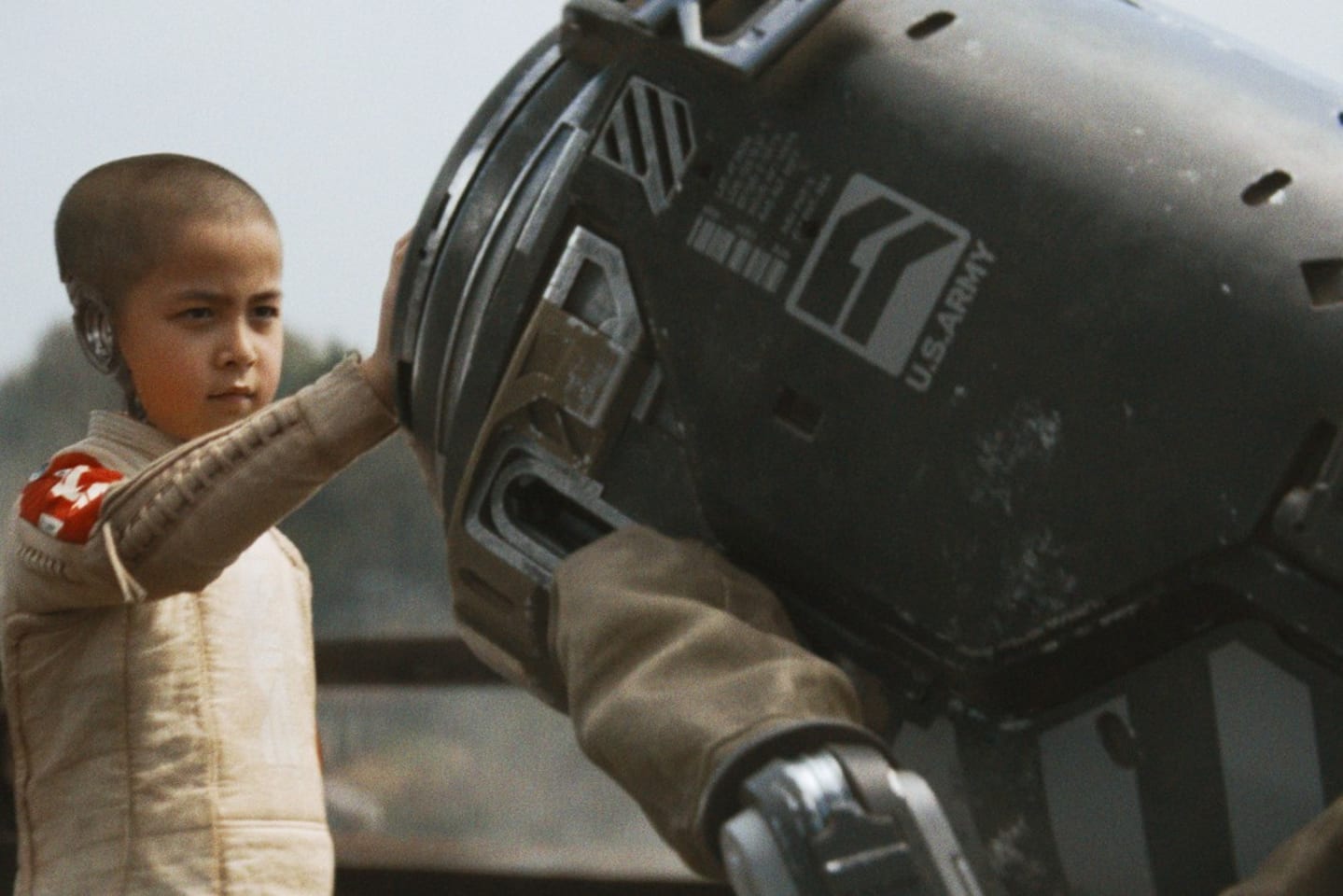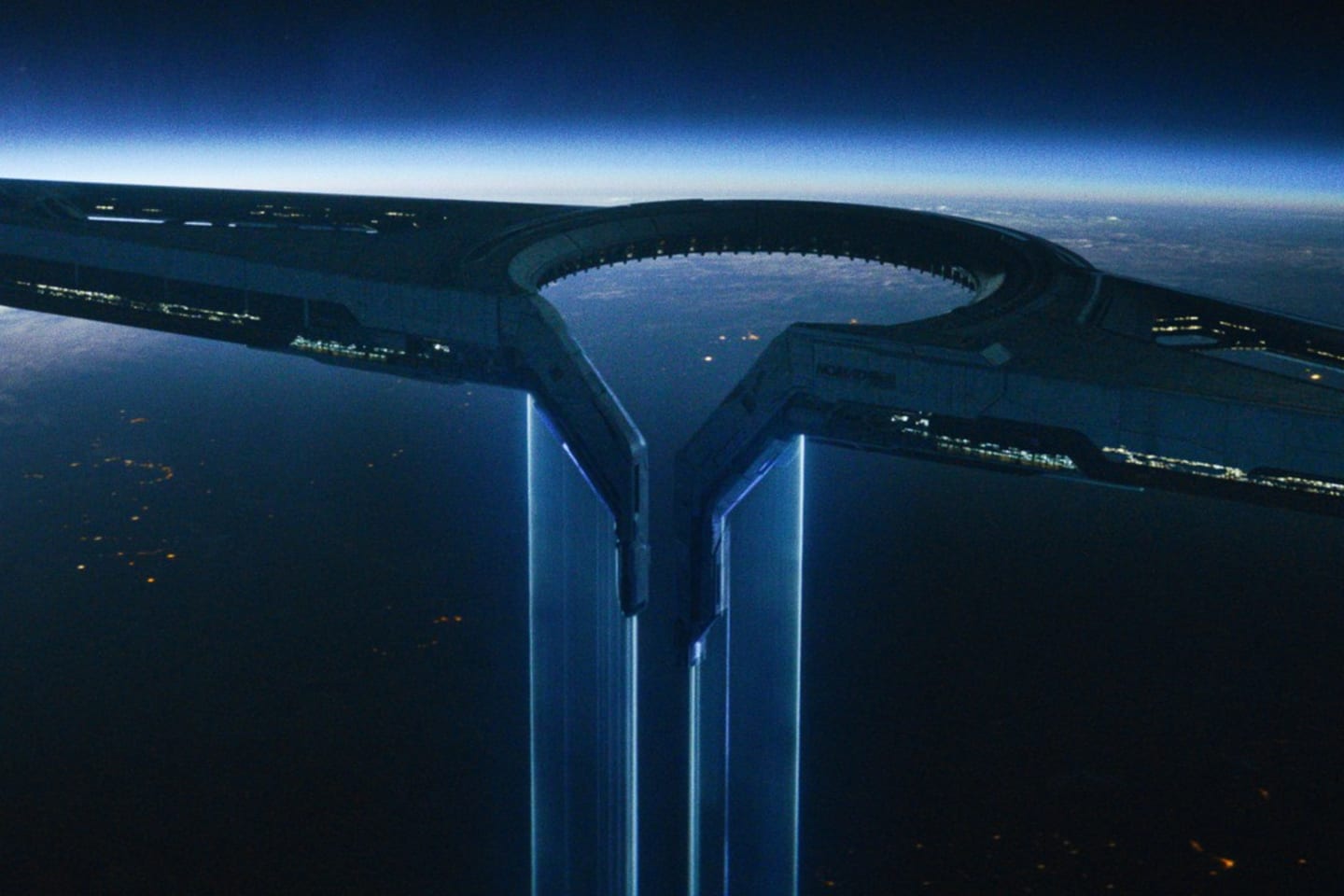Gareth Edwards’ The Creator is hitting theaters, and so far it’s been earning high praise from critics for a number of elements that make it a slick, dazzling sci-fi movie. Set in a future in which half of humanity believes artificial intelligence to be a destructive enemy with which to go to war, and the other half of humanity views artificial intelligence as some sort of god, The Creator presciently grapples with quite a few of the questions we’re asking about A.I. right now. When soldier Joshua (John David Washington) is tasked with stealing the A.I.’s secret weapon, he discovers it’s a robot child. The child, Alphie (Madeleine Yuna Voyles), may very well be the key to bringing about peace between humanity and artificial intelligence, and soon, Joshua finds himself protecting the very thing he once fought.
While the concept itself may not rewrite the genre, the way The Creator was filmed certainly could. In an era in which budgets for big genre movies are blowing up to greater heights, Edwards’ focused, innovative approach to shooting the film could be a blueprint for how to create visually stunning, hugely epic sci-fi films without breaking the bank. Here are a few things we learned from an early IMAX footage screening and Q&A with Edwards about what made the making of The Creator so special and unique.
1. The Creator Proves Big Ideas Are Born From Mundane Moments

Because of the grand scope and scale of The Creator, one might think that the inspiration for the movie came from an equally grand vision. Instead, it came from a mundane, small moment while Edwards was in a car. Perhaps it’s because sci-fi uses huge scope and spectacle to examine the most basic of human ideas that we forget that the best ideas can be born of normality. Edwards, however, did not.
“We had just finished Rogue One, and my girlfriend–well, her family–lives in Iowa, and we drove across America to go visit. And as we were driving through the Midwest and there’s all these farmlands with tall grass, I was just looking out the window. I had my headphones on, I wasn’t even trying to think of an idea for a film, but I was just getting a little bit inspired. And I just saw this factory in the middle of this tall grass. I remember it having a Japanese logo on it, and I remember thinking, ‘Oh, I wonder what they’re making in there,’ and then I just started thinking, you know [points to head and laughs] my tendencies, ‘Probably robots, right?’ And then I started thinking, well, okay. Imagine you were a robot built in a factory, and then suddenly for the first time ever, you got to step outside into a field and got to look around and see the sky. I wondered what that would be like. I thought it would make a really good moment in a movie, but I didn’t know what that movie was. I tried to throw it away, you know, metaphorically ball it up and throw it away. But then the idea tapped me on the shoulder like, ‘Well, it could be this,’ and these ideas kept coming. By the time we pulled up at the house, I kind of had the whole movie mapped out in my head, which never happens, really.”
2. The Crew Was Surprisingly Small

Edwards pitched New Regency by having his artist friends and collaborators draw up about 50 storyboard images. At first, seeing the visuals, the studio execs’ reaction was to turn it down, thinking it would easily be a $300 million movie. But Edwards knew that to get the movie made, they had to make a huge epic sci-fi movie in a very different way.
“We’re going to do it very differently. We’ll film it with this very small crew and essentially reverse engineer the whole movie.” In theory, what you normally do is have all this design work and you have to build sets in a studio against a green screen and it’ll cost a fortune. We were like, ‘We will shoot the movie in real locations in real parts of the world that look closest to what these images are. Then afterward, when the film’s fully edited, get the production designer, James Klein, and other concept artists to paint over those frames and put the sci-fi on top.’ Everyone was like, ‘It sounds great.’ But basically, we have to really prove it to them.”
3. It’s Truly A Global Film Thanks To The Budget

Because of that small crew, however, Edwards and his team were able to save on the budget of the film, enabling them to travel all over the world to find the perfect locations that would help support the visuals, and thereby cut down on the amount of green screen and post-production CGI needed.
“On this one, we went to like 80 locations. We didn’t really use any green screen. There was occasionally a little bit here and there, but very little…And so we went to Nepal, the Himalayas, we went to active volcanoes in Indonesia, temples in Cambodia, Thailand, Vietnam, Tokyo for mega city stuff. Then we did a bit in Pinewood using their stage and screen.”
Those are just a few of the locations that the The Creator shoot traveled to. For example, Lebanon and the Maldives were also locations used in filming.
4. The Filming Style Was Innovative & As Natural As Possible

The Creator feels truly immersive, with 360 shots and intense scenes. As audiences watch, they may find themselves wondering, wait…where are the cameras? There was no cut in that scene, so there should have been a camera in the frame. Did they cut it out? As it turns out, anyone who notices that notices it for a reason. Edwards and his crew designed a new way of lighting and filming to be able to pull off the immersive feel.
“I needed the actors and me to have total freedom on set. Something we did on this film that was really important was that I wanted it to feel as realistic as possible. We would always be able to shoot in 360 degrees and the problem working against you when you try and do that in a film is you have lights like we have here. The second you want to move the camera, you suddenly see the lights and you spend 20 minutes moving them.
So it takes forever to shoot a scene. The way we worked there was with really sensitive camera equipment in terms of how we could use the lights. They’re very lightweight. We’re all familiar with how lights have become. We thought we could set it up — you have a boom operator holding a pole with the microphone on. Why can’t you have a person holding a pole with a light on it? We had a best-boy type running around holding the light by hand.
If the actor suddenly got up and did something — went over here and suddenly there was a better shot — I could move and suddenly the lighting could really be readjusted. What would normally take like 10 minutes to change was taking like four seconds. We would do 25-minute takes where we’d play out the scene three or four times. It just gave everything this atmosphere, this sort of naturalism and realism that I really wanted to get where it wasn’t so prescribed. Like you’re not putting marks on the ground and saying stand there. It wasn’t that kind of movie.”
5. The Filmmaking Was Also Very Guerilla At Times

With being on location as much as possible, Gareth Edwards and his crew were often at the mercy of the locals and local law. In one instance, however, it worked out better than he could have hoped. When searching for a location that would become the high-tech laboratory, he turned a difficult situation to their advantage.
“We needed to find a really technologically advanced factory. We looked everywhere. There were car manufacturing plants that were nervous about us filming but eventually, we found a particle accelerator and it’s one of the most advanced, probably in the whole of Thailand. We were like, ‘Please, please, please, could you let us film.’ It looked amazing. It had that whole circular thing going on. We went to visit and they were like, ‘There’s no way you’re going to be allowed to film here.’ They asked what do you want to do? Why are there people with guns shooting and explosions?
This is like a multi-multimillion dollar facility with all these leading cutting-edge scientists. Then, at the very last minute, someone was like, ‘What filmmaker is doing this?’ They were like, ‘It’s this guy from the States or whatever. He lives over there, but he’s English.’ And they go, ‘What films has he done?’ They went, ‘He did this Star Wars film called ‘Rogue One.’ And then, they were like, ‘Can we be in it?!’ We were like, ‘Sure! Whatever [it takes.]’ Everybody was in those scenes, with everyone running around. They’re nuclear physicists — they really are — and they were amazing.”
On the other hand, the immersive on-location style of filming also presented Edwards and The Creator team with different problems–such as when they tried to shoot at a location that the local government refused to shut down for them.
“We went into real locations. We wanted it to feel like we were making a student film to some extent. But it got to the point where like that beach scene where Gemma’s running and there’s all that crossfire. It was the beginning of when the pandemic restrictions were lifted and Thailand was opening up to tourists.
They’re like, ‘You can film on this beach but you can’t close it.’ so it’s like, how are we going to do that scene where there are tourists there? I don’t know what happens normally in Thailand at night on these beaches. But with the stuff that’s in the movie and the trailer, we didn’t close the beach. If you look carefully in the background, you can see cars and tourists, but one person came over and went, ‘What are you doing?’ It was just the four of us with a camera running around so it didn’t look like this big massive movie. The goal, hopefully, was that it all ends up on the screen. We tried to be very efficient about it.”
Get tickets for The Creator, in theaters now.













